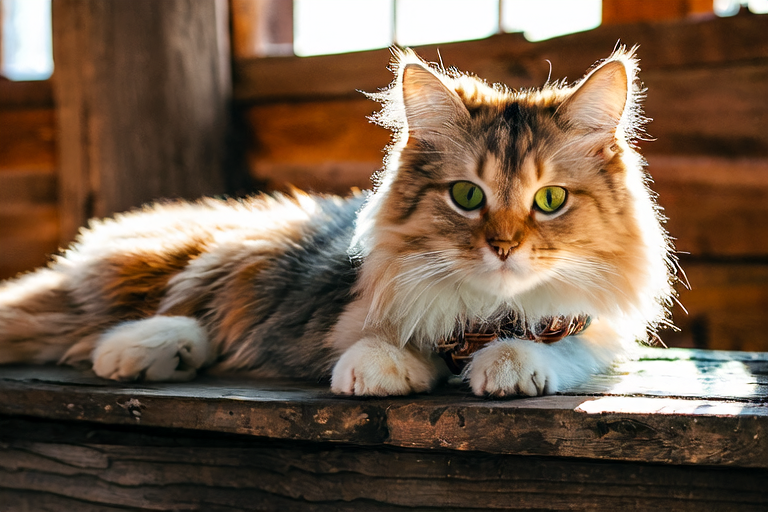Unique Characteristics of Norwegian Pets
Norway, a country known for its stunning landscapes and rich cultural heritage, also boasts a unique array of pets that reflect the nation’s climate, geography, and cultural values. From their distinct breeds to their dietary preferences and interaction styles with their owners, Norwegian pets have several fascinating characteristics. This article delves into these features, providing a comprehensive overview of how Norway’s environment and culture shape its pet population.
Distribution of Pet Breeds in Norway
The distribution of pet breeds in Norway is influenced by both historical factors and modern trends. Traditional working dogs like the Norwegian Elkhound and the Lundehund have long been integral parts of Norwegian life. The Norwegian Elkhound, for instance, was originally bred for hunting elk but now serves as a loyal companion dog. According to recent surveys, approximately 30% of households in rural areas own at least one Norwegian Elkhound.
In contrast, urban centers tend to favor smaller, more adaptable breeds such as the Cavalier King Charles Spaniel and the Shih Tzu. These breeds are well-suited for apartment living and city environments. Data from the Norwegian Kennel Club shows that the number of registrations for smaller breeds has increased by 15% over the past decade.
Behavioral Habits of Norwegian Pets
Norwegian pets exhibit behaviors that are closely tied to their natural surroundings. Dogs, especially those bred for hunting or herding, display high levels of energy and independence. For example, the Norwegian Buhund, often used for herding reindeer, requires regular exercise and mental stimulation. Owners report that their Buhunds need at least two hours of daily physical activity to remain content.
Cats, on the other hand, tend to be more independent but still form strong bonds with their human companions. In a study conducted by the University of Oslo, it was found that nearly 70% of cat owners reported that their pets preferred to spend time alone rather than engage in constant interaction. However, when they do interact, cats show deep affection towards their owners.
Dietary Preferences of Norwegian Pets
The diet of Norwegian pets is heavily influenced by local resources and cultural practices. Fish is a common ingredient in pet food due to Norway’s abundant fishing industry. Many commercial pet foods include fish oil supplements to promote healthy skin and coat. A survey conducted by the Norwegian Veterinary Association revealed that 60% of pet owners feed their animals fish-based diets.
Additionally, there is a growing trend towards organic and locally sourced ingredients. Some pet stores offer specialty lines of food made from ingredients grown in Norway, appealing to environmentally conscious consumers. This shift reflects broader societal values regarding sustainability and health.
Interaction Between Norwegian Pets and Their Owners
The relationship between Norwegian pets and their owners is characterized by mutual respect and companionship. Dogs, in particular, are seen as valued members of the family. In a national poll, 85% of respondents stated that they considered their dogs to be part of their immediate family. Cats, while more aloof, also enjoy close relationships with their owners.
One notable aspect of this relationship is the emphasis on outdoor activities. Whether it’s hiking with a dog or letting a cat explore safe outdoor spaces, Norwegians encourage their pets to experience nature. This practice not only benefits the pets’ physical health but also strengthens the bond between them and their owners.
Influence of Norwegian Culture on Pet Rearing
Norwegian culture places a strong emphasis on equality and respect for all living beings. This philosophy extends to how pets are treated within families. Pets are often given the same level of care and attention as human family members, reflecting broader societal values.
Educational programs aimed at teaching responsible pet ownership are widely available. Schools frequently host workshops where children learn about animal welfare and proper handling techniques. Such initiatives help instill a sense of responsibility from an early age, contributing to a more compassionate society.
Impact of Climate and Geography on Norwegian Pets
The harsh winters and rugged terrain of Norway have shaped the physical traits and behavioral patterns of its pets. Breeds like the Norwegian Elkhound and the Lundehund possess thick coats that protect them from cold temperatures. Their double-layered fur acts as insulation against the elements.
Geography also plays a role in determining which breeds thrive in different regions. Coastal areas, for example, are home to many water-loving dogs like the Labrador Retriever, while inland regions prefer breeds adapted to colder climates such as the Siberian Husky. The availability of space and resources varies across the country, influencing the types of pets people choose to keep.
Conclusion
Norwegian pets exhibit unique characteristics shaped by their environment, culture, and history. From their breed distributions to their dietary preferences and interactions with owners, these animals reflect the values and lifestyle of the people who care for them. Understanding these factors provides insight into why certain breeds flourish in specific regions and highlights the importance of responsible pet ownership.
